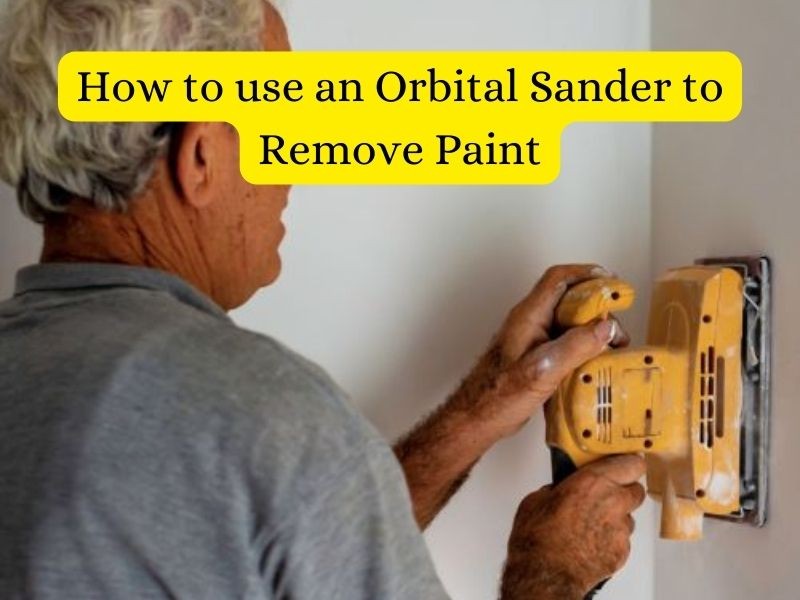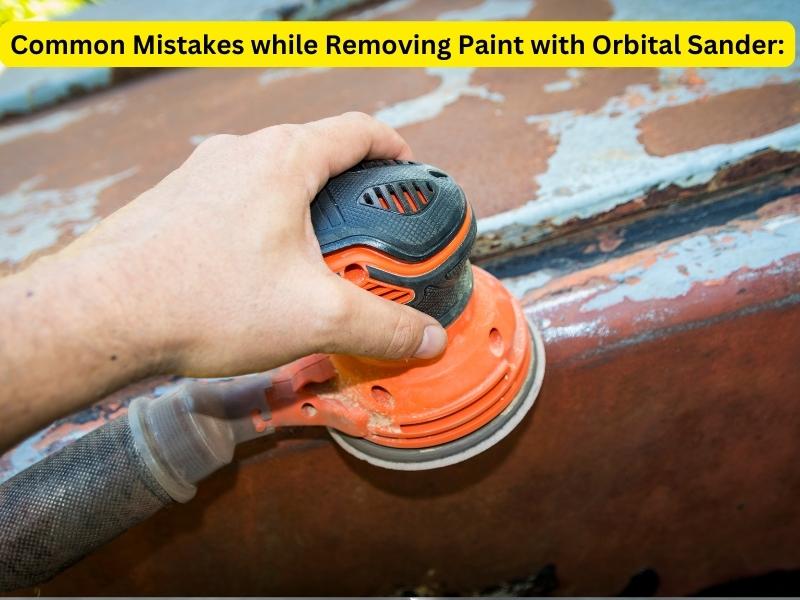If you are looking to remove paint from a surface, an orbital sander is a tool for the job. Orbital sanders are perfect for removing paint because they vibrate on an orbital path, which prevents them from creating swirl marks on the surface. In this blog post, we will discuss how to use an orbital sander to remove paint, as well as some tips and tricks that will make the process easier.
Can you use an Orbital Sander to Remove Paint?
The answer is yes, you can use an orbital sander to remove paint. But it is important to keep in mind a few things:
- It is important to ensure that the paint does not contain lead. In the case of paint containing lead, extra precautions must be taken when sanding it off.
- You should be aware that orbital sanders produce a lot of dust. Therefore, you should wear a respirator and make sure that the area you are working in is well ventilated.
- Make sure you don’t damage the surface underneath the paint. If you do, it will be very difficult to repair.
- Take your time and be careful when removing paint from surfaces using an orbital sander. If you hurry, you could end up doing more damage than good.
If you follow these guidelines, then you should be able to do it safely and effectively.
How to use an Orbital Sander to Remove Paint?

This guide will show you how to use an orbital sander to remove paint from a surface step by step.
You will need the following supplies to get started:
- An orbital sander
- Sandpaper
- A dust mask
- Eye protection
A step by step Guide:
- The first thing you need to do is make sure your work area is well ventilated.
- Then you can put on your dust mask and eye protection.
- It’s important to choose the right sandpaper for the job. A coarse sandpaper is best for removing paint.
- After choosing the right sandpaper, attach it to the orbital sander.
- After you have prepared your sander, use it to gently remove the paint. Move it in small circular motions over the surface of the paint.
- To prevent damaging the surface underneath, keep the sander moving while you work.
- When you have removed all the paint, you can vacuum up the debris.
- Now you know how to remove paint with an orbital sander.
Benefits of using an Orbital Sander to Remove Paint:
- They provide a more even finish
- You can use them on both flat and contoured surfaces
- You can operate them relatively easily
- Most orbital sanders come with dust collection bags to minimize cleanup.
- Orbital sanders are much faster than hand sanding, so you can remove paint much quicker.
- They create a smoother finish than hand sanding, so your paint job will look better.
- They are less likely to damage the wood underneath the paint, so your surfaces will be better protected.
Common Mistakes while Removing Paint with Orbital Sander:

1. A non-consistent pattern of sanding:
The most common mistake people make when removing paint with an orbital sander is not moving the sander in a consistent pattern. This can result in uneven sanding and visible scratches on the surface.
2. Too much pressure:
Another mistake is using too much pressure when sanding, which can also cause scratches. The most effective way to avoid these mistakes is to practice on a piece of scrap wood before tackling the main project.
3. Using the wrong sandpaper:
The use of the wrong type of sandpaper is also a common mistake that people make. Coarse sandpaper will remove paint more quickly but can also damage the surface underneath. Fine sandpaper will take longer to remove paint but is less likely to damage the surface.
4. Clogs sandpaper:
The clogs sandpaper should also be changed after a while. Sandpaper clogs quickly when removing paint, so it’s important to change it out frequently in order to avoid damaging the surface.
5. Workpiece not secured:
The workpiece should also be secured. An orbital sander can cause the workpiece to spin, so it’s important to use clamps or a vise to keep it in place. This will help avoid any accidents and ensure a smooth, even finish.
An orbital sander can be used to remove paint quickly and easily with a little practice and attention to detail. Just make sure to avoid these common mistakes.
FAQS:
You can find a list of FAQs below to help you better understand how paint is removed:
Q: What are some of the most common methods for removing paint?
A: You can remove paint using a variety of methods, including sanding with an orbital sander, scraping, or using a chemical stripper. As each method has its own benefits and drawbacks, you should choose the one that is most suitable to your needs.
Q: What are some of the challenges associated with removing paint?
A: One of the biggest challenges associated with removing paint is dealing with lead-based paint. If you’re dealing with lead-based paint, there are some special considerations you need to take into account. First of all, you’ll need to make sure that you’re taking proper safety precautions. This means wearing a respirator and protective clothing and making sure that you’re working in a well-ventilated area. Lead-based paint can be hazardous to your health, so it’s important that you take the proper precautions.
Another challenge that can come up when removing paint is dealing with asbestos-containing materials. If you’re planning on removing paint from an older home, there’s a chance that it may contain asbestos. Asbestos is a hazardous material that can be dangerous to your health if it’s inhaled. If you suspect that your paint may contain asbestos, it’s important to have it tested by a professional before you start any work. If it does contain asbestos, they will be able to advise you on the best way to proceed with the removal.
Q: What are some of the safety concerns associated with removing paint?
A: As with any project that involves working with chemicals or dealing with lead, there are always safety concerns to be aware of. Here are a few things to keep in mind when removing paint:
- Wear gloves, eye protection, and a dust mask.
- Work in a well-ventilated area.
- Be aware of your surroundings and don’t remove paint near open flames or heat sources.
- If you’re working with lead-based paint, be sure to follow all EPA guidelines for safe removal and disposal.
